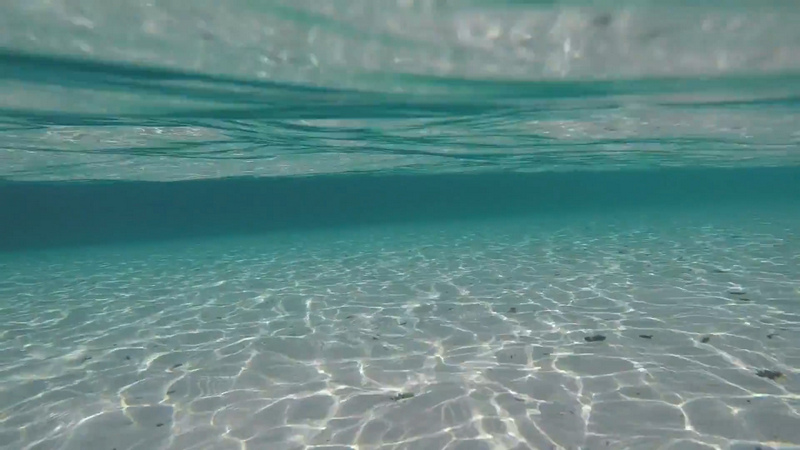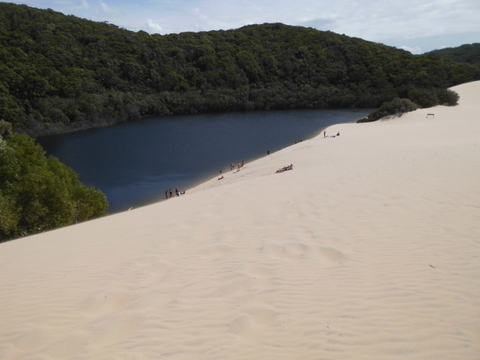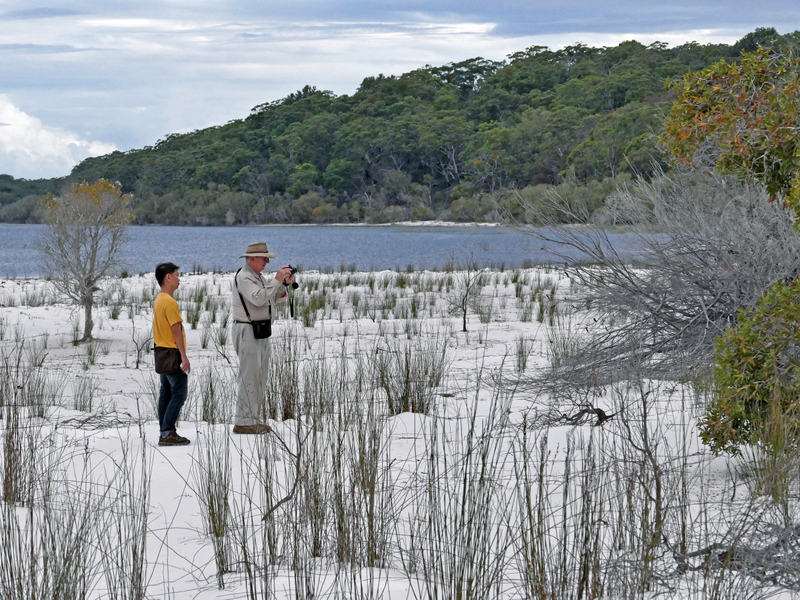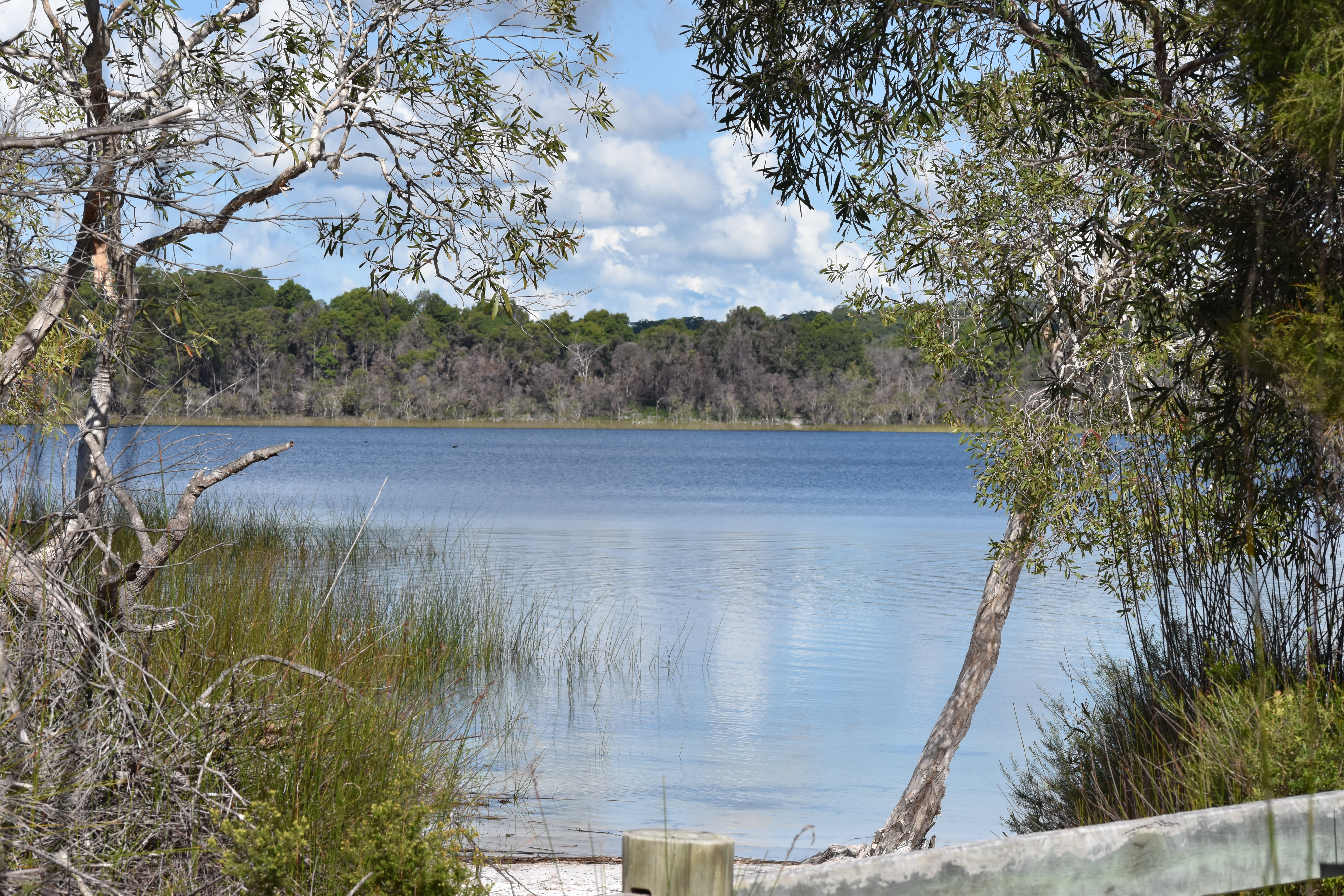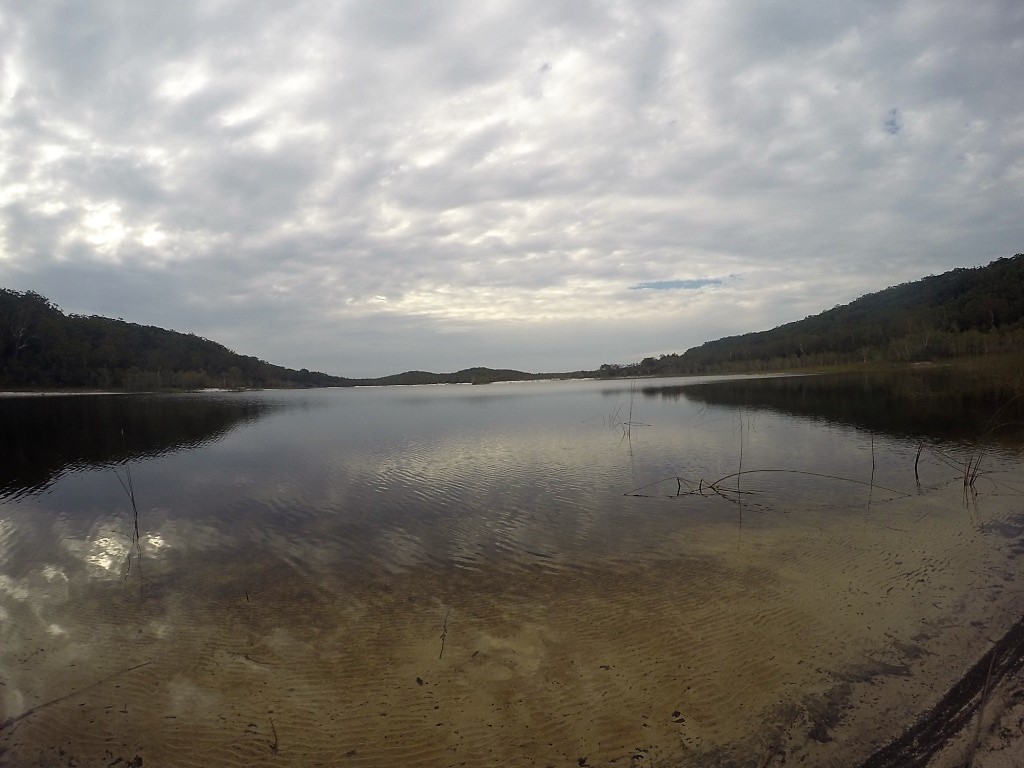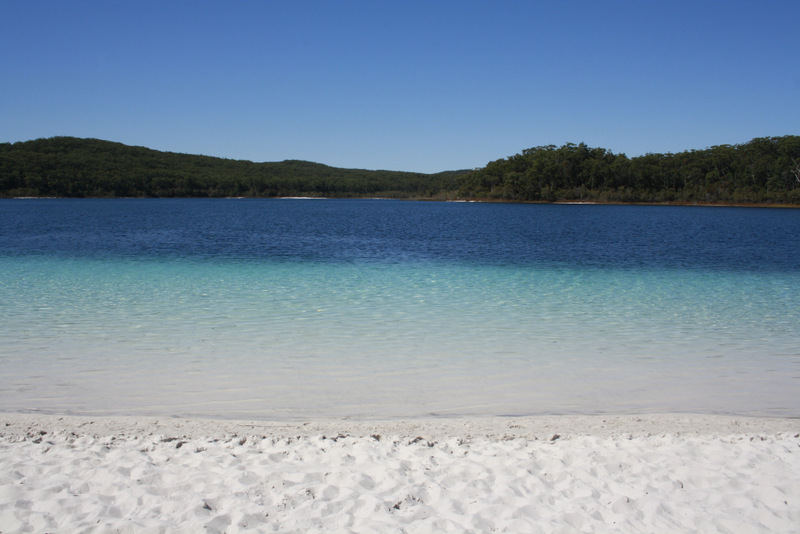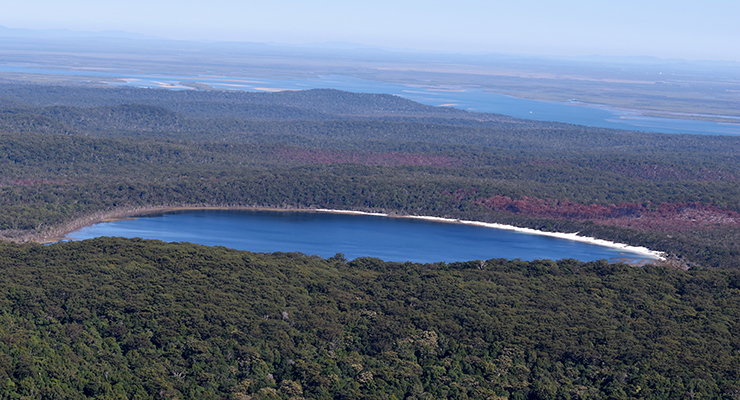
Lakes
OVERVIEW
The Island's sand mass provides the base for an incredible landscape of lakes, swamps and creeks, including the world’s highest and largest dune lakes.
Window lakes, perched lakes, barrage lakes
The Island has mostly two types of lakes: 'window' lakes (formed where part of the regional water table has risen higher than the surrounding land); and 'perched' lakes (situated above the regional water table in depressions where water is held by organic-rich, formed and hardened perching layers, known locally as coffee rock). A third type of lake on the Island is the barrage lake (such as Lake Wabby). These are formed when a sand blow blocks a natural water course.
There are over 40 perched lakes, including Lake McKenzie (150 hectares in area) with its crystal clear water and almost pure silica white sand and Lake Boomanjin (200 hectares) which is coloured by tannins giving the water a red tint.
The freshwater lakes and streams of Kgariare distinguished by their high acidity (low pH) and extremely low nutrient levels. As a result they support relatively low floral and faunal biomass and are considered biologically unproductive.
Why are these systems vulnerable?
Changes in can be brought about by human use (such as sunscreen and soap pollutants) and climate change.
More information: Arthington A.H., Burton H., Williams R. and Outridge P.M. (1986). The ecology of humic and non-humic dune lakes, Fraser Island, with emphasis on the effects of sand infilling in Lake Wabby. Australian Journal of Marine and Freshwater Research, vol. 37, pp. 743-64.
